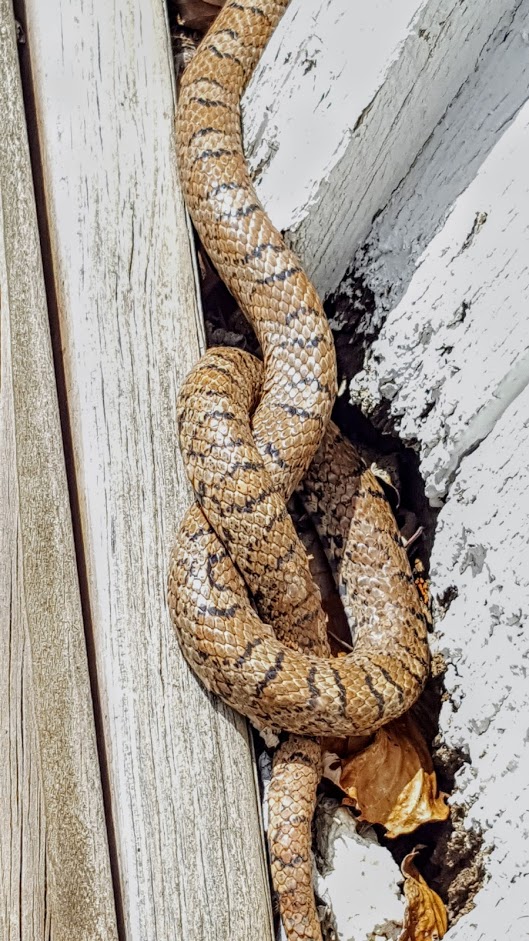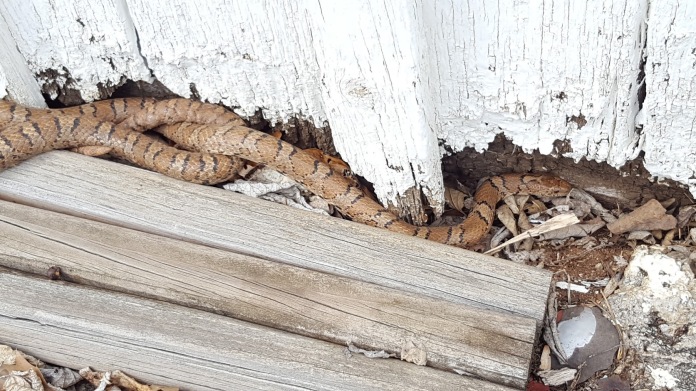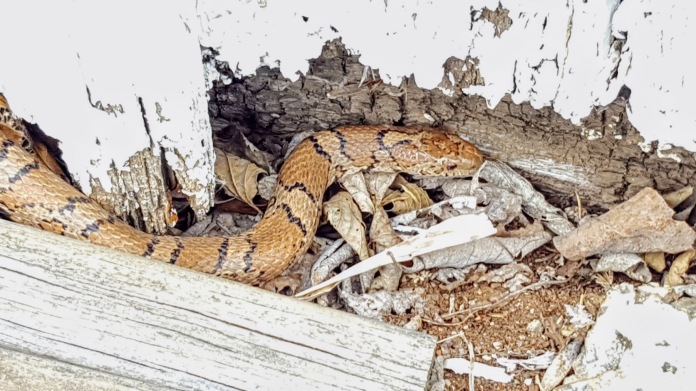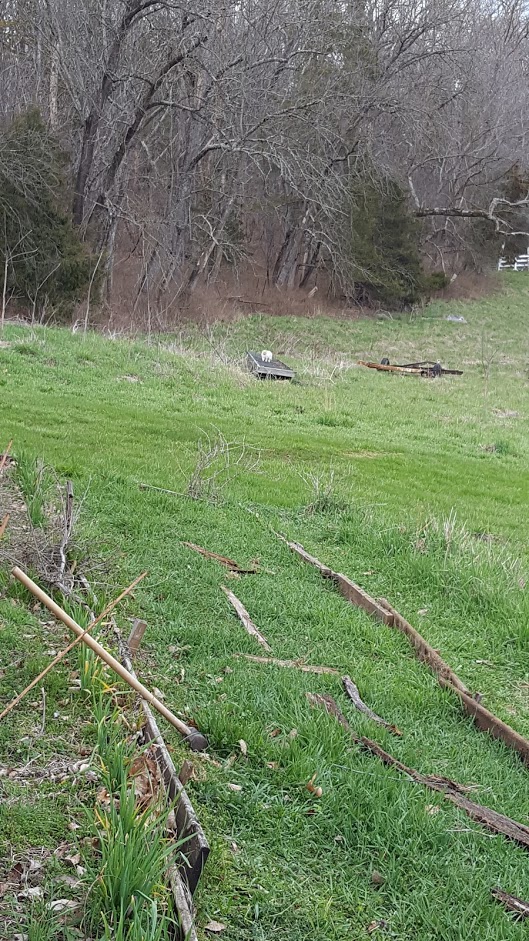Maybe it is a romantic notion but I feel with a combination of population control (either natural or hunting/trapping) and providing wildlife with adequate food resources not directly associated with human activity, the greatest possible harmony between humans and wild animals is achieved. That is why I hope allowing numerous brush piles on the edges of the farm will provide habitat for small mammals in turn keeping the wild predators like foxes, coyotes and racoons content and away from my future livestock. I also hope to keep the deer nourished (and not by my tree seedlings!) through winter while supplementing their diet in the spring and summer to keep the doe’s producing quality milk for the fawns. Sometimes natural cycles lead to a food scarcity so providing wildlife with food plots will help them survive and keep deer/rabbits/etc. from doing any more damage to my mulberry and other tree seedlings. The phrase I used “not directly associated with human activity” simply means I will provide some cultivated plants for them to browse like normal rather than setting up a feed trough full of corn.
So I planted a wildlife plot and figure my process could use some critiquing or possibly help others. Full disclosure, I plan to hunt on this so the intentions of the fall plot are not 100% pure!
Crop Planning
Look at most expensive retail wildlife food plot seed mixtures and you will likely find at least 50% grass seeds. My my dad bought one to try out that was 85% ryegrass! Attempting to prove my point, I went on amazon only to find that zero food plot mixes list seed proportions. Upon reflection, I think it may be a Virginia-specific state regulation because all the retail plot seed bags in stores have the seed proportions listed on a sticker seemingly placed haphazardly on the bag as an afterthought.
I decided to make my own mix. My plot covered about 6,000 square feet. My dad’s plot up the hill was 10,000 square feet and used bags of commercial seed mix plus some barley with my extra mix filling in the rest. The amount of seed I used is likely overkill, but efficiency is less important at the scale I’m working.
I’m not sure how to accurately represent proportions so I provided percentages by weight and by number of seeds.
| Plant |
Weight
of seed
Used |
Seeds per
Pound |
Approximate
Seed Used |
Percentage by Seed Weight |
Percentage
by Number of Seed |
| Buckwheat |
0.5 |
14000 |
7000 |
4 |
0.714285714 |
| Forage Turnips |
1 |
220000 |
220000 |
8 |
22.44897959 |
| Crimson Clover |
5 |
120000 |
600000 |
40 |
61.2244898 |
| Austrian winter peas |
5 |
1600 |
8000 |
40 |
0.816326531 |
| Rape |
1 |
145000 |
145000 |
8 |
14.79591837 |
|
|
|
|
|
|
| Total |
12.5 |
—– |
980000 |
100 |
100 |
Buckwheat was simply a nurse crop used in place of grain as I figured I would eek out a bit more nectar until frost.
Forage turnips and rape (canola) are both nutritious annual brassicas that exists only as a forage crop. Any tubers formed by the former will break down releasing mineralized nutrients as well as void cavities in the soil serving as aeration. From hence forth “brassicas” will refer to the turnips and the rape because in all honesty…I can’t tell the plants apart!
Crimson is winter hardy clover variety that is a nutritious nitrogen fixer meaning it will feed the deer as well as the soil. It blooms in the spring after the first trees of the season finish but before white clover begins so the plants that survive browsing and trampling will provide vital early season nectar to both my honeybees and the native pollinators.
Austrian winter peas are a winter-hardy field pea and an overall interesting plant. In addition to the wildlife plot, they will also be grown in my garden beds over winter. Growth continues down to 10 degrees Fahrenheit (-12 degrees C). While I doubt any fruit (peas) will be produced, they are nutritious salad green to be enjoyed humans and wildlife alike. As a member of the Fabaceae family, these too fix nitrogen but at 1/8 the rate of crimson clover according to very brief research.
Amazon was actually the cheapest source I found for the peas. Everything else was sourced from Johnny’s Selected Seeds
Additionally, the plot is located directly adjacent to a grove of ~20 persimmon trees, so it is clearly not the only food source for wildlife!
Site preparation
Weeks prior, I took a soil sample while indicated the soils were slightly alkaline but not enough to warrant any additional action. At least not this year.
I elected to plant the plot at the end of August with at least a 20% chance of rain in 11 of the next 14 days. At the time of planning, I really only relied on the forecast for the next week and we all know how accurate rain forecasts are even days ahead. Do your best and leave the rest at the mercy of mother nature.
First I mowed the pasture as low as I possibly could. Then I borrowed my uncle’s one pass disking machine that lightly plows with serrated disks up front then breaks up the clumps with the smooth rear disks. The O-ring on a hydraulic hose blew out leading to an unplanned overseeding of my pasture road with clover.
Planting
I mixed the buckwheat, rape, turnips and austrian winter peas together in a bucket, then broadcast them using a shoulder slung broadcaster (like this one).
Then I mustered my best impression of a draft horse and drug a short length of scrap chain link fence across the soil to partially cover the seeds. I weighted it down with a scrap length of 4×4. Please accept my utmost apology for not documenting this photographically…I will do so next year!
Finally, I broadcast the clover on top of the finished soil.
Mulching
I lightly mulched the entire food plot with about 10% of a 1200 pound round bale of ancient hay I found in the loft of the barn. The reasons for mulching are numerous:
- Hopefully cover any exposed seeds that were not covered by the fence-dragging. Many seeds require dark to germinate
- Related to above: hide seeds from the eyes of hungry songbirds
- Shade the soil from the august sun
- Lessen evaporation after rains increasing water retention of the soil
- Add some organic matter when it breaks down in the future
- Prevent rain and wind from whisking away my bare, disturbed soil
Pictures:
2 days passed between hauling loads of mulching hay out to the plot. Of course the buckwheat had already germinated as well as some of the brassicas:

I can’t tell the difference between turnips and rape as they are so closely related. But at least everything is represented in this image! Clover has its renowned three leaves but are growing very low and require some hunting in this image. Brassicas are the jagged-leaved plants like the one just to the right of center in the bottom of the image. Austrian winter peas are just to the left of the brassica and look like clover except the three leaves are more pale and fleshy; almost succulent looking. Most of the initial buckwheat sprouts were killed in the lack of rainfall, but the late germinators and stunted survivors are still apparent. You can also see the new pasture grasses sending up young blades since I only disked and didn’t kill them.

And the entire plot in all of its glory.

Future Considerations
There are a few things I would consider doing differently.
Spreading some sulphur to bring my alkaline soil (Thanks limestone!) down to neutral pH or just below.
Spread some composted manure on the site (more on this later).
To ensure a throughout vegetation kill, I would consider covering the planned plot with a black tarp, rotating every few days until the entirety of the plot has been killed.
Without a seed drill, I would likely still need to disk to break up the hardpan.
However I have a different idea I may try. August and September is usually the perfect time to spread manure as it has been composting in the manure pack since winter and the vegetation is still actively growing. Maybe I could use a combination of tarp smothering, light scratching of soil with the fence contraption to open small spots of soil to take seed, then using the composted manure as a mulch to cover the seeds that need dark in order to germinate. I will certainly try this in at least a small area next year.
Lastly, when I have livestock, pigs could be put on the plot site with electric fencing. If left on long enough they will get bored having eaten all the vegetation and begin to root for…well…roots! They could be my method of light soil disturbance. Seed could be directly broadcast followed by a finishing pass with the fence then mulch of some sort. Alternatively, chickens could be used in the same manner, or even after the pigs. Checkout any backyard chicken forum and within a few clicks, you’ll see someone’s yard entirely denuded of vegetation by running either too many chickens or unmanaged (ie: rotational access) chickens. Like I always say, why work when the animals will be happy to do it for you?
Conclusion
So far, the brassicas and winter peas are kicking everything’s ass in terms of germination speed and growth. Unsurprisingly, the brassicas are more numerous as they make up 75% of the seeds in the mixture. Austrian winter peas are showing the most growth overall. The buckwheat is sparse and seemingly unnecessary as a nurse, but it could be the week without rain hindering their numbers or growth rate. Considering nectar and soil conditioning properties alone, buckwheat will likely be included every year. Clover is there, just with extremely tiny and low growing leaves so far. Honestly at this point I am perfectly happy with my seed mix design though depending on winter performance, I may beef up the proportion of winter peas.
I’ve been using the process of planning and executing the wildlife plot as a way to conduct a small scale experiment of using alternative methods to raise food or feed without (or reduced) use of machinery, soil amendments, tilling and herbicides. Recommendations, experiences or any thoughts you may have are greatly encouraged! And it is not too late to plant your own plot!






